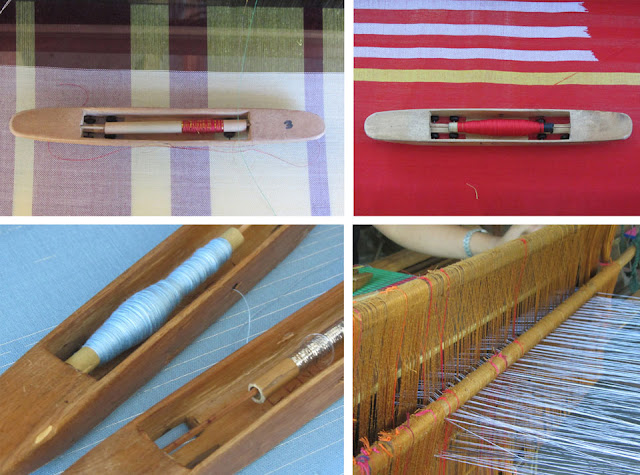The famous guitar maker from Leganes
From goldsmith to guitar maker. The shift was not difficult for retired government employee Nelson Defelix. He is a man who is used to intricate work. He has complete carpentry tools. He knows how to strum the guitar and he is a member of a winning choir.
 |
Nelson Defelix, a guitar maker from Leganes, Iloilo
|
Defelix, a resident of Leganes, Iloilo, revealed that he started making guitars in 2002. “I was a member of the Department of Environment and Natural Resources (DENR) choir and participated in an office contest held in Cebu, noted for its guitar-making. Anyway, DENR Region 6 became a champion in the said Vismin choir contest,” Defelix said.
“We bought a guitar in Mactan, Cebu after that. But back home, the guitar’s bracing broke so I examined it and did some research. That’s when I started working on guitars,” he said.
He credits several people for lending him guitar repair references such as his choir teacher Tim Buensuceso and Passad’s Mr. Julian Lee.
In a span of 12 years, Defelix has made 30 sturdy guitars and has repaired hundreds. Yamaha School of Music, the Yamaha Guitar Store, The Perfect Pitch, and guitar players are his clients. “I also do guitar set-up and tuning,” he said.
You will know if Defelix made the guitar because the inner shell of its body contains these words: “N.B. Defelix. Custom-built acoustic guitar. Contact no. 337.97.85. and 09078363144.
He sells a guitar for P6,000 and if there’s a design, it costs P8,000.
“It takes me almost a month to finish making a guitar because I still process the wood material,” he said.
The process includes drying, slicing, planning to the specified thickness, and sanding.
To shorten the process, he also buys kiln-dried wood. Such wood has low moisture content. Kiln drying allows the wood to contract but prevents it from warping.
Defelix is proud to say that the guitars he made as early as 2002 are still working.
“I feel happy that people appreciate the guitars I make. They said they have a different tune compared to the commercially-made ones,” he said.
 |
Defelix shows his guitar made of exotic wood and other durable materials
|
GUITAR PARTS
So, what makes Defelix’s guitars different and durable?
For the back and sides, he uses “dao” and mahogany. The body is the hollowed and biggest part of the guitar; the part that you rest on your lap or knee when you play the guitar.
For the top portion of the body, he uses mahogany or spruce. “I use hardwood such as mahogany. It belongs to exotic wood and is suited for guitar making. What’s good about solid wood is, the wood becomes more seasoned in time and produces a good tone,” he said.
Within the body are the braces that make the guitar respond to string tension. On top is the bridge, which anchors the string to the headstock. The sound radiates from the soundhole while the smooth piece of material near it is the pick guard. It protects the body from scratches.
The guitar’s head or headstock is located at the upper portion of the guitar. It contains six machine heads or turning keys that when turned or adjusted, determine the pitch of a specific guitar string.
Below the head is the neck, the portion where one holds the guitar when one is playing it. The neck has the fingerboard and metal frets with position marks that guide the player with the chords he is playing or strumming.
For the fingerboard and bridge, Defelix uses “kamagong”, a black-colored wood. “Commercial guitars use lawaan and paint them with black,” he said.
Meanwhile, a fingerboard is located at the top portion of the guitar’s neck. It is also called a fretboard.
The metal parts that divide the fingerboard are called frets. When strings are fretted, they allow the latter to produce different pitches.
“I use metal stainless frets because they resist corrosion or string wear. Thus, the frets have a longer lifetime warranty. The ordinary guitars use nickel,” said Defelix.
Meanwhile, he uses bone for the nut and saddle. “The nut and saddle are the part where the rest of the strings,” he said. He said that in the United States, they use ivory on high-end guitars.
Defelix uses a guitar scale measurement of 25 ½ inches. A small increment is added to the string length called the” compensation. “It is added to the scale length to make the guitar in perfect tune. The scale length is measured from the front lip of the nut to the center of the saddle,” he explained.
Apart from having good quality wood as a component, a guitar will also last if the owner takes care of it. “Put it in its case if not in use. Wipe the strings. Prevent scratches and avoid putting it just about everywhere unprotected. Keep it in tune always, too,” he concluded./




